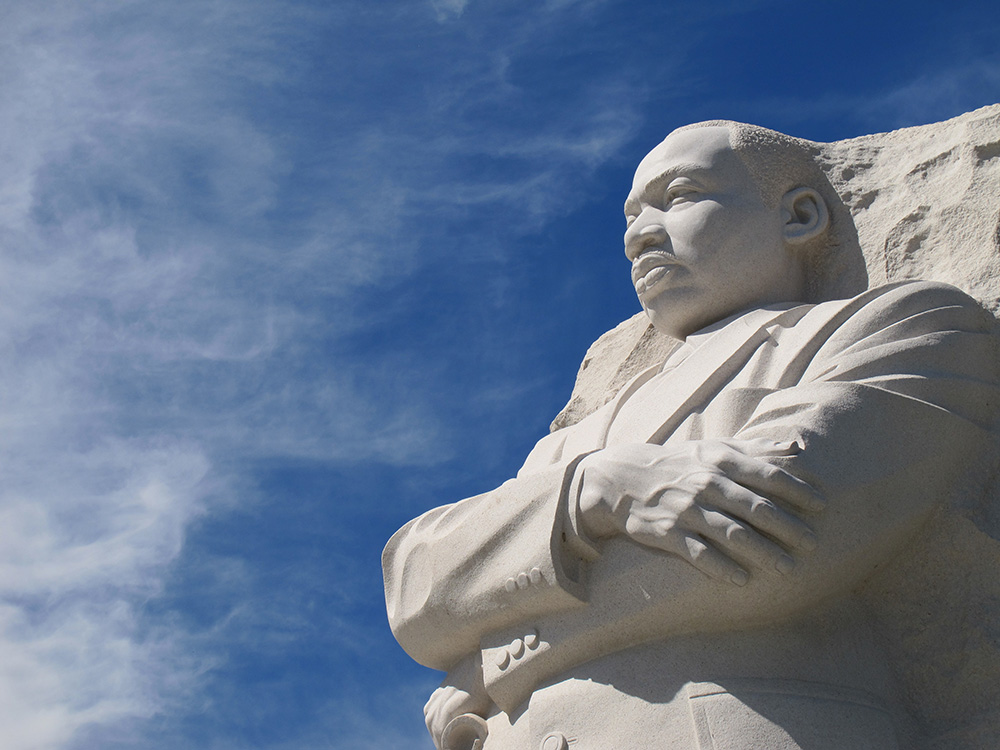Author of Battle for the Marble Palace

The legal battles waged by Thurgood Marshall and the NAACP stand on one side of the equation. Ultimately, these efforts led to Brown v. Board, the groundbreaking Supreme Court ruling that put an end to racial segregation in public schools in 1954.
The other strand of the movement highlights the marches, protests, and other forms of non-violent advocacy associated with Dr. Martin Luther King Jr. For some reason, these two forms of advocacy – one largely based in the courts, the other, looking to sway the public and lawmakers – have been separated in the popular imagination.
Yet the two strains of the civil rights movement fed off and overlapped with each other. Nowhere was this convergence more apparent than the Montgomery bus boycott, which brought King to national prominence.
When Rosa Parks was arrested in December, 1955 for refusing to move to the back of a segregated bus in Montgomery, Alabama, King led a 13-month boycott of the city’s busing system.
From the outset, King relied on the Court’s backing to launch the unprecedented effort. ‘‘I want it to be known that we’re going to work with grim and bold determination to gain justice on the buses in this city,” he declared to several thousand on-lookers early in the process. “And we are not wrong.… If we are wrong, the Supreme Court of this nation is wrong.”
While the boycott continued, Fred Gray, a local African-American attorney, filed a lawsuit in federal court challenging segregated busing. The key for Gray was to avoid the Alabama courts, which would be hostile to his arguments and time-consuming, making it unlikely for the boycott to endure a lengthy judicial process. Aided by Marshall, Gray relied on a Reconstruction era civil rights law to bypass the state courts. (Gray went on to represent civil rights advocates on several other occasions as well as victims of the Tuskegee syphilis experiment.)
In June 1956, a federal court invalidated Alabama’s segregated busing system as unconstitutional. “The separate but equal doctrine was repudiated,” by Brown, the judge wrote, expanding the reach of Brown’s thinking beyond public schools. Though the Court’s seminal opinion had specifically invalidated segregated schooling, the justices blessed its broad application to every element of the South’s Jim Crow laws.
When the Justices received the appeal in November, they saw no need to rehash old arguments. Instead of asking for lengthy briefs and oral arguments, they cited Brown in affirming the lower court in an unanimous opinion. And just like that, with two sentences, they put an end to segregation in intra-state busing throughout the South.
“We have kept going with the faith that in our struggle we have cosmic companionship, and that, at bottom, the universe is on the side of justice,” King declared to another capacity crowd at the Holt Street church in response to the Court’s decision. “Just yesterday we experienced a revelation of the eternal validity of this faith,” he continued. And he tied the Court’s ruling to the religious and moral justifications he relied upon throughout his crusade against racism. “It was on this day that the Supreme Court of this nation affirmed that segregation is unconstitutional in public transportation.’’
In December, the Court’s rejection of a second appeal forced a Montgomery judge to integrate city buses. That same day, King and his associates ended the 381-day boycott. In doing so, King came to appreciate the Court’s handiwork. “It is true we got more out of this boycott than we went in for,” he declared afterwards. “We started out to get modified segregation on buses but we got total integration.”
The Montgomery bus boycott served as a model for the non-violent tactics, persuasive rhetoric, and community coordination King came to master and catapulted him to the front lines of the civil rights movement. It also revealed another, largely forgotten, facet of the era. Often along the way – and not just in Brown – the Court stood on the side of civil rights advocates.
Original Article “MLK And The Supreme Court” Published in Forbes




